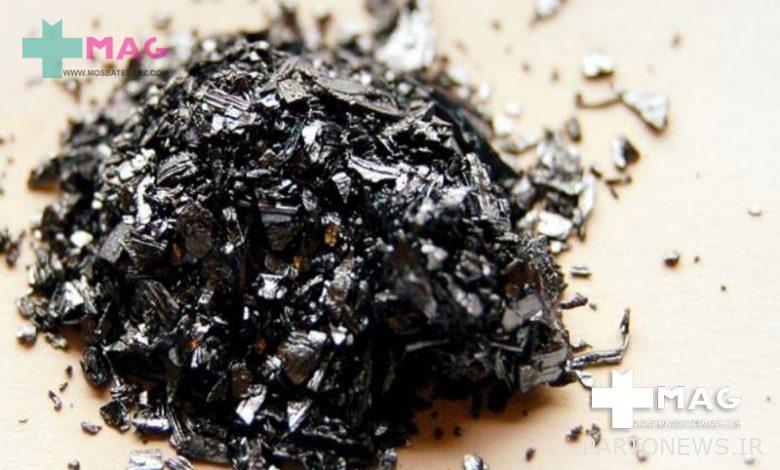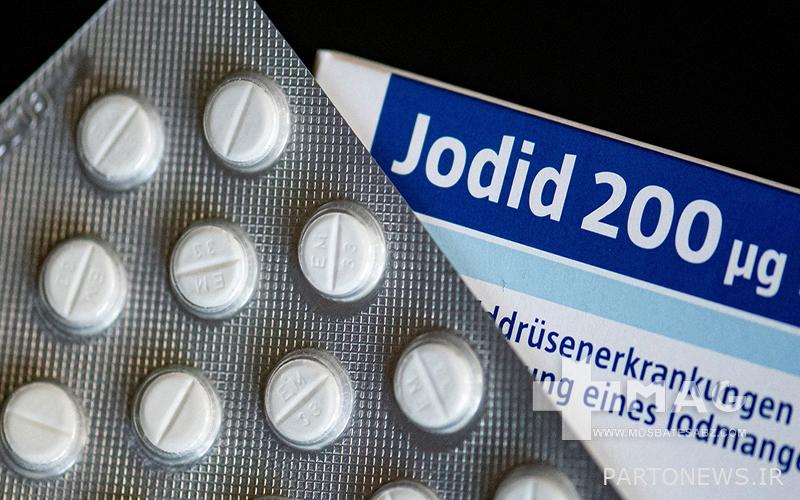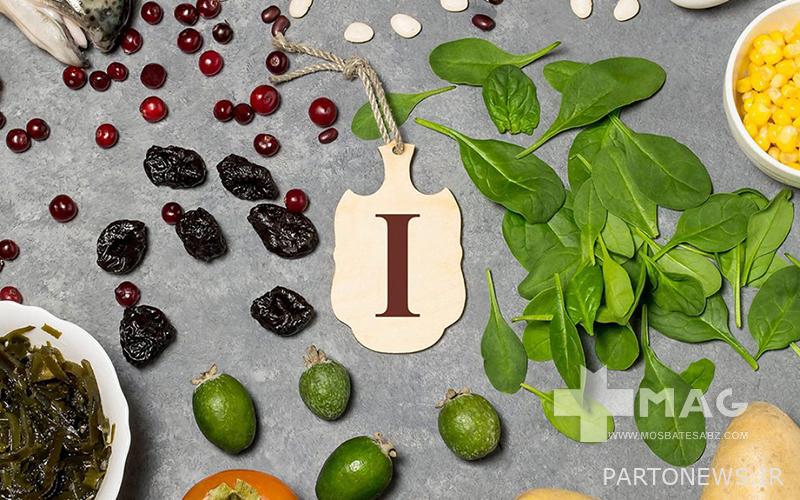What is iodine? And what is its use?

What is the answer to the question of iodine? And what is its use? It should be noted that iodine reduces thyroid hormone and can kill fungi, bacteria and other microorganisms, such as amoebae. Iodine deficiency is one of the most common and preventable health problems in the world. Most iodine is found in the oceans, where it is concentrated by marine organisms, especially algae.
Iodine is used orally to prevent and treat iodine deficiency and its consequences, including goiter and some thyroid disorders. A special type of iodine called potassium iodide is also approved by the US FDA to prevent thyroid damage after a radioactive accident. Iodine tablets are also used for pink eyes, gum infections, wound healing and many other conditions, but there is limited scientific evidence to support many of these.
What we read in this article
What is iodine?
What is the answer to the question of iodine? And what is its use? Now we want to talk about its use. But before that, you should know that adults need 140 micrograms (micrograms) of iodine per day. Most people should be able to get all the iodine they need by eating a varied and balanced diet. If you follow a strict plant-based diet and do not eat any fish, you may want to take an iodine supplement. Some types of plant milk also need to be fortified with iodine. If you are planning to take an iodine supplement, consult a specialist and a doctor.
Daily iodine requirement
The following table shows the daily requirement of iodine at different ages:
| Age | Men | Women | Pregnancy | Breastfeeding |
| From birth to 6 months | 110 micrograms | 110 micrograms | ||
| From 7 to 12 months | 130 micrograms | 130 micrograms | ||
| From 1 to 3 years old | 90 micrograms | 90 micrograms | ||
| From 4 to 8 years old | 90 micrograms | 90 micrograms | ||
| From 9 to 13 years old | 120 micrograms | 120 micrograms | ||
| From 14 to 18 years old | 150 micrograms | 150 micrograms | 220 micrograms | 290 micrograms |
| From 19 years old onwards | 150 micrograms | 150 micrograms | 220 micrograms | 290 micrograms |
What is the use of iodine?
Iodine is used for the following people:
People with iodine deficiency
Oral iodine supplements, including iodized salt, are effective in preventing and treating iodine deficiency.
People exposed to radioactive radiation
Taking iodine pills can protect the thyroid after exposure to radioactive radiation. Of course, there is still no complete research in this field and experts offer different opinions.
Iodine tablets for people with pink eye disease
Pink eye or conjunctivitis is a common eye infection that is more common in children. The use of iodine-containing eye drops in the form of iodine povidone appears to reduce the risk of developing pink eyes in infants. It also seems to help treat pink eyes in adults.
Foot ulcers in diabetics
Using iodine on foot ulcers may help treat diabetic foot ulcers.
People with swelling (inflammation) of the lining of the uterus (endometritis)
Washing the vagina with iodine-containing solution in the form of povidone iodine before cesarean delivery reduces the risk of swelling of the uterine lining.
People with fibrocystic breast
Consumption of molecular iodine in a dose of about 3000-6000 micrograms per day reduces sensitivity and chest pain. Doses less than 1500 micrograms per day do not seem to be helpful.
People with swelling and sores inside the mouth (oral mucosa)
Rinsing the mouth with iodine solution seems to prevent chemotherapy-induced pain and swelling in the mouth.
People with severe gingivitis (periodontitis)
Rinsing the mouth with iodine solution during non-surgical treatment of gingival infection can help reduce the depth of the infected gingival sacs.
People with infection after surgery
Use of iodine in the form of povidone iodine before or during surgery reduces the risk of infection. But it is not clear how it compares to other options such as chlorhexidine for infection prevention.
People with thyroid storm
This condition is also called thyroid shock, which can be very dangerous. To cure this disease, iodine tablets may be recommended along with other treatments to treat thyroid disease.
People with thyroid gland
Oral iodine intake can improve thyroid masses called thyroid nodules.
What are the side effects of iodine tablets?
Iodine is probably safe for most people if consumed less than 1100 micrograms per day. Large amounts or long-term use of iodine is probably safe. Adults should avoid long-term use of higher doses without proper medical supervision. Excessive consumption can increase the risk of side effects such as thyroid problems. Iodine in large quantities can cause metallic taste in the mouth, toothache and gingivitis, burning in the mouth and throat, upset stomach and many other side effects.
Related Posts
Side effects of topical iodine
Iodine is probably safe for most people when used properly diluted products. 2% iodine solution is a prescription product approved by the Food and Drug Administration.

What is the warning about taking iodine pills?
Note the following:
Pregnancy and lactation:
Iodine is probably safe if taken orally in the recommended amounts or when properly applied to the skin using a approved product (2% solution). If you are over 18, do not consume more than 1,100 micrograms of iodine daily. If you are 18-14 years old, do not consume more than 900 micrograms of iodine daily. Iodine is probably unsafe if taken orally in high doses. Excessive consumption may cause thyroid problems in the baby.
children:
Iodine is probably safe if taken orally in appropriate doses depending on age. Doses should not exceed 200 micrograms per day for children 1 to 3 years old, 300 micrograms per day for children 4 to 8 years old, 600 micrograms per day for children 9 to 13 years old and 900 micrograms per day for adolescents.
A type of rash called herpetic dermatitis:
Iodine intake can make this rash worse.
Thyroid disorders:
Prolonged use or high doses of iodine may worsen some thyroid disorders, such as hypothyroidism, enlarged thyroid gland (goiter), or thyroid tumor. Also, people with autoimmune thyroid disease may be particularly sensitive to the harmful effects of iodine.
9 What is a healthy diet rich in iodine?
Now that you know what iodine is? Here are 9 iodine-rich food sources:
Seaweed
Seaweed is a good source of antioxidants, vitamins and minerals. It is also low in calories.
Cod
Cod is a versatile white fish with a delicate texture and mild taste. It is relatively low in fat and calories but provides a wide range of minerals and nutrients including iodine.
dairy
Dairy products are the main sources of iodine. The amount of iodine in milk and dairy products varies greatly depending on the amount of iodine in beef and the use of iodine-containing disinfectants during lactation. 1 cup of milk can provide 59 to 112 percent of the recommended daily allowance of iodine.
Iodized salt
Currently, iodized and bonded salts are sold in Iran. There is approximately 71 micrograms of iodine in 1/4 teaspoon of iodized salt, which is 47% of the recommended daily allowance. However, salt also contains sodium.
Shrimp
Shrimp is a low-calorie, protein-rich seafood that is an excellent source of iodine. In addition, shrimp provide key nutrients such as vitamin B12, selenium and phosphorus. Shrimp and other seafood are good sources of iodine because they absorb some of the iodine in seawater.
tuna fish
Tuna is also a low-calorie, high-protein, high-iodine diet. In addition it is a good source of potassium, iron and B vitamins. Tuna is also a good source of omega-3 fatty acids, which may reduce the risk of heart disease. Fish that are higher in fat have lower levels of iodine. Because tuna is fatter, the amount of iodine in tuna is lower than that of leaner fish such as cod.

egg
Eggs are also a good source of iodine. For less than 100 calories, a whole egg is a lean source of protein, healthy fats and a wide range of vitamins and minerals. However, most of these nutrients, including iodine, come from the yolk. Egg yolk is a good source of iodine because it is added to chicken food. However, since the iodine content in chicken feed can vary, the amount of iodine in eggs can also fluctuate. On average, a large egg contains 24 micrograms of iodine, or 16 percent of its daily value.
Dried plums
Prunes are a good plant source of iodine. Dried plums provide 13 micrograms of iodine, or about 9 percent of their daily value. Plums are commonly known to help relieve constipation. This is due to the high content of fiber and sorbitol, a type of sugar alcohol. Plums are rich in vitamins and nutrients, including vitamin K, vitamin A, potassium and iron. Because of the nutrients in plums, it may help improve heart health, reduce the risk of colon cancer, and even help with weight management by reducing appetite.
Beans
Beans are a good source of fiber, magnesium and folate, which make them a choice for heart health. Due to the diversity of iodine in soil, irrigation water and fertilizers, the amount of iodine in fruits and vegetables can vary. However, on average, one cup of cooked beans contains 16 micrograms of iodine, or 10 percent of its daily value.
last word
What is the title of this article and what is its use? Was. In which we tried to say that iodine is an essential mineral that you should get from your diet. Interestingly, your thyroid gland needs it to produce thyroid hormones that have many important functions in your body. The recommended daily allowance (RDI) of iodine for most adults is 150 micrograms per day. For pregnant or lactating women, this condition is more common. In fact, one-third of the population is at risk of deficiency, especially those living in areas with only a small amount of iodine in the soil, including European countries. Iodine deficiency can lead to swelling of the thyroid gland, known as goiter, and hypothyroidism, which can lead to fatigue, muscle weakness, and weight gain.
Please rate this article
[مجموع: ۰ میانگین: ۰]


